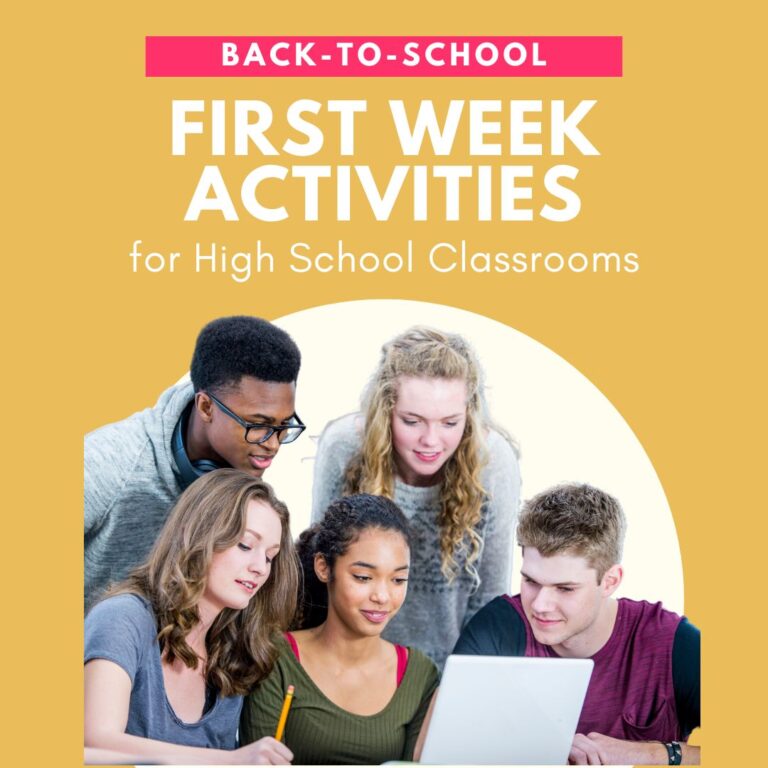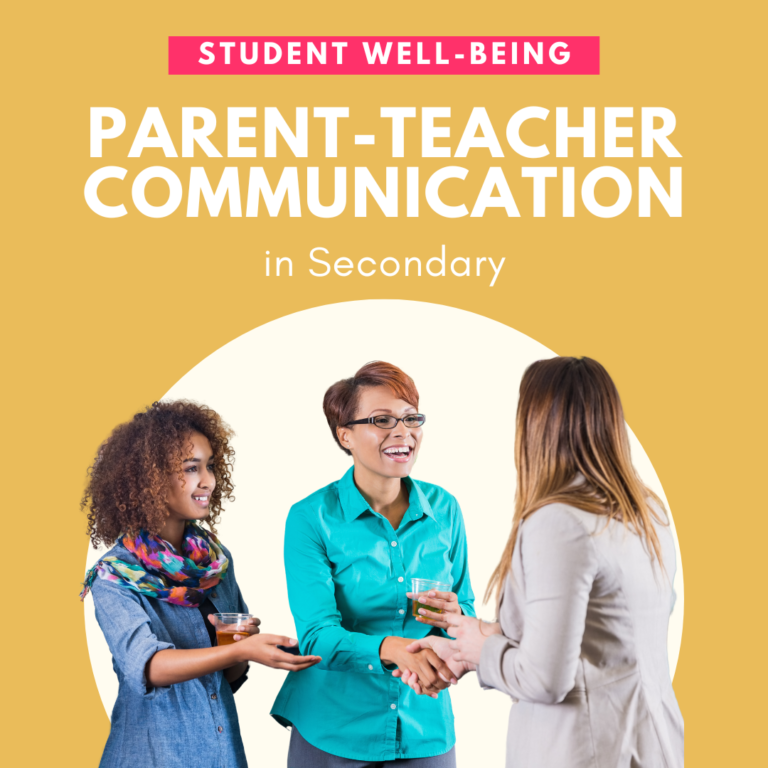Are you interested in teaching meditation in your classroom? Perhaps you are looking to integrate mindfulness into your curriculum. Meditation and mindfulness are becoming more common in classrooms. This could be because of the many benefits of meditation. This article will explain these benefits. It will also suggest how to introduce meditation in school so that you can bring this practice into your classroom.
Is Meditation in School Allowed?
Not everyone agrees with meditation in school. I recently read a Letter to the Editor of Professionally Speaking, the publication of the Ontario College of Teachers. One of their readers had responded to an article about the practice of yoga in schools. Their perspective is important to consider:
“As a Catholic teacher, I believe that my job is not only teaching the curriculum but also teaching the Catholic faith and integrating it into various subjects. Since yoga has roots in Hinduism, I would not feel comfortable practicing it or teaching it to my students” (Professionally Speaking, December 2019).
This perspective is a reminder to always consider our students’ culture. As educators, it is important to create inclusive spaces in our classrooms. They should not just reflect our own personal values. Our students, our staff, and our school community should be reflected in our classroom.
Meditation is a part of spiritual and religious practices. However, clinical psychologists and health care practitioners also recommend meditation. This is because meditation improves mental health and physical well-being. This blog post will focus on these research-based benefits. It will also explore some of the barriers that may prevent teachers from using meditation in schools. Finally, I’ll share some considerations for the safety and well-being of your students.
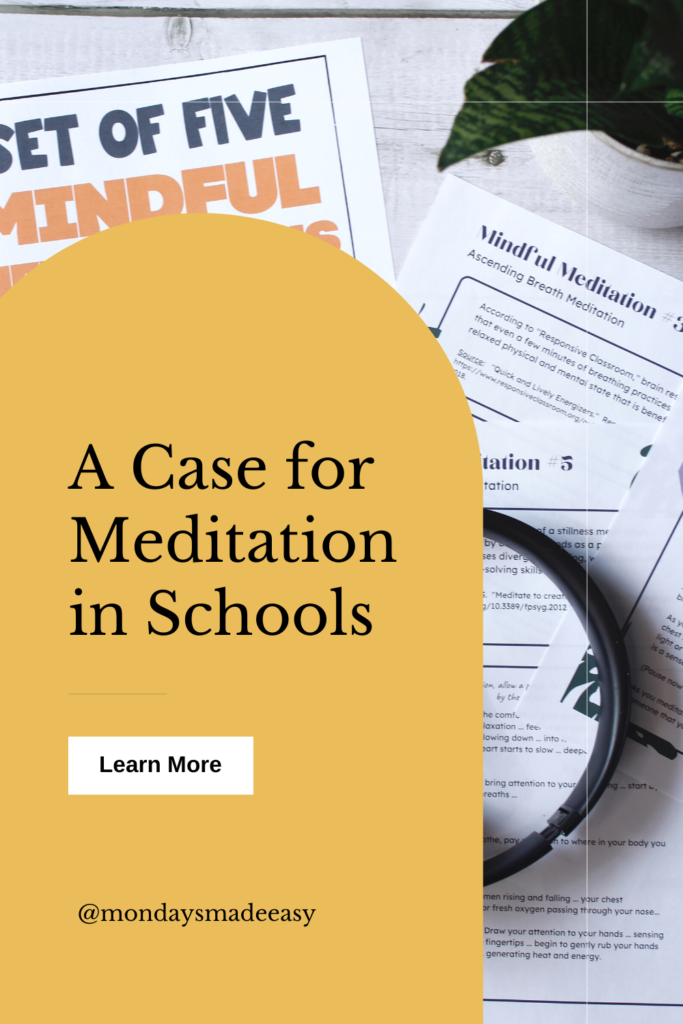
Mindfulness in the Classroom
In order to explore meditation in school, it may help to define some key terms. When I speak of meditation in the context of schools, I am referring to focused-attention exercises. These exercises include focusing on breathing, sensations within the body, spatial awareness, tangible and abstract objects, and our thoughts.
This article will not explore styles of meditation that include chanting, chakras, or visualizations of deities or gods. I do not wish to discredit these practices. They are fundamental to the history of meditation, along with meditation’s value in Hinduism and New Age beliefs. Instead, I hope to discuss meditation as a mindfulness practice.
Meditation is an extremely personal experience. With proper guidance, it can support the cultural identities of all students. It can also help them explore their personal thoughts, emotions, and beliefs.
Why is Meditation Important in Schools?
You might be curious about meditation in schools to support student mental health. Meditation is a great practice to promote student well-being in your classroom. We know this because medical science indicates that meditation improves brain function.
Research conducted at UCLA concludes that a long-term meditation practice correlates with more “folds” within the cortex of the brain. This process is known as gyrification. It is believed to support brain function and performance.
Studies conducted at Harvard Medical School explore the relationship between meditation and brain density. Doctor Sara Lazar concluded that meditation increased the thickness of the cerebral cortex. Her study noted higher levels of grey matter density in the brains of participants with a regular meditation practice. The cerebral cortex of the brain is responsible for complex cognitive behavior. It has implications for our students’ personality expression, decision-making, and social-emotional behavior.
In a separate study, Doctor Lazar notes the difference in the density of the hippocampus of participants who began a meditation practice during the duration of the experiment. An increase in the density of the hippocampus is beneficial for learning, working memory, and emotional regulation. This can be especially helpful for your students with depression and trauma. Both depression and trauma correlate with a decrease in the density of the hippocampus.
Peer-reviewed research also identifies the relationship between meditation and changes in the temporoparietal junction. This area of the brain is responsible for the development of perspective, empathy, and compassion.
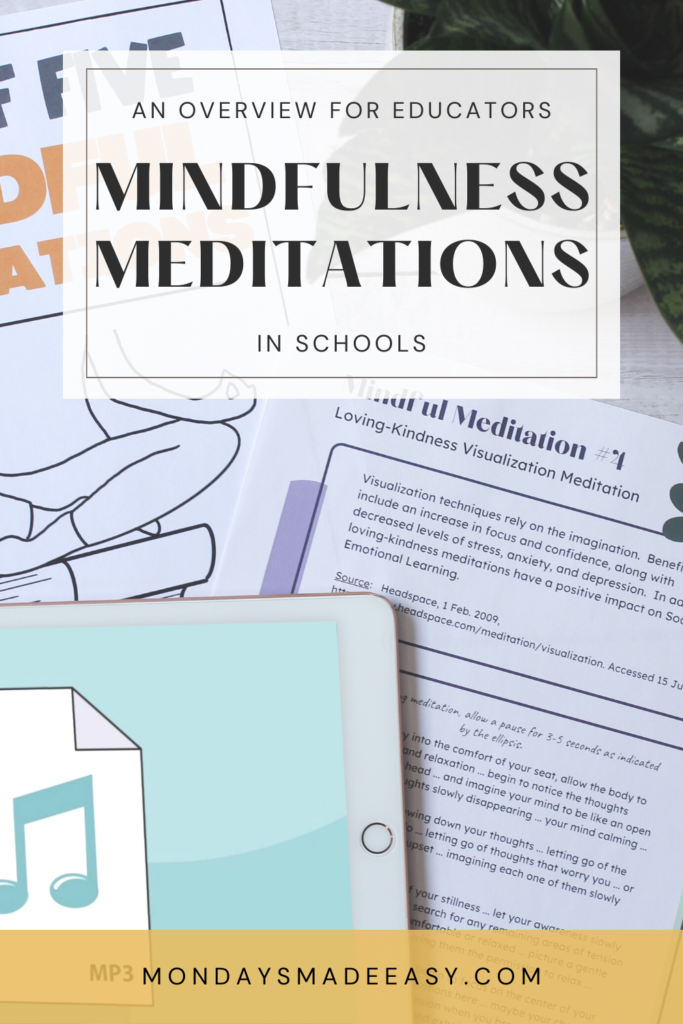
Research on Meditation in the Classroom
Many of us do not need medical evidence to understand the relationship between body and mind. However, exploring this relationship creates a strong case for meditation in schools.
Studies demonstrate the relationship between meditation and the amygdala. This part of the brain is responsible for what is known as the “fight-or-flight” response. This stress response releases the stress hormone cortisol, which has a negative impact on the immune system. Meditation lowers cortisol levels in the blood. This can have a positive impact on reducing illness and disease.
Meditation can also help with pain management. The Journal of Neuroscience shares the impact of meditation and mindfulness on pain relief. Focused breathwork help to relieve pain. Meditation also helps with the awareness and labeling of physical sensations and associated thoughts. Because of this, meditation has been deemed an effective alternative to prescription medication for pain management!
Why Should Students Meditate?
The Institute for Psychological Research determined that meditation increases divergent thinking. This promotes creativity and abstract thinking. Additionally, focused attention meditation has been proven to stimulate the prefrontal cortex, which is responsible for emotional regulation and problem-solving skills.
With this medical science in mind, we see how meditation in schools can support student achievement. This achievement can translate to academic subjects like math, science, language, music, and creative arts. From a holistic perspective, meditation in schools offers social-emotional learning opportunities. This is one more reason to add these practices to your school’s curriculum.
You might even be familiar with visualization techniques used by exceptional athletes. These examples include American rock climber Alex Honnold and Olympic champion Michael Phelps. Physical education teachers may even wish to build meditation into their warm-up routines in gym class!
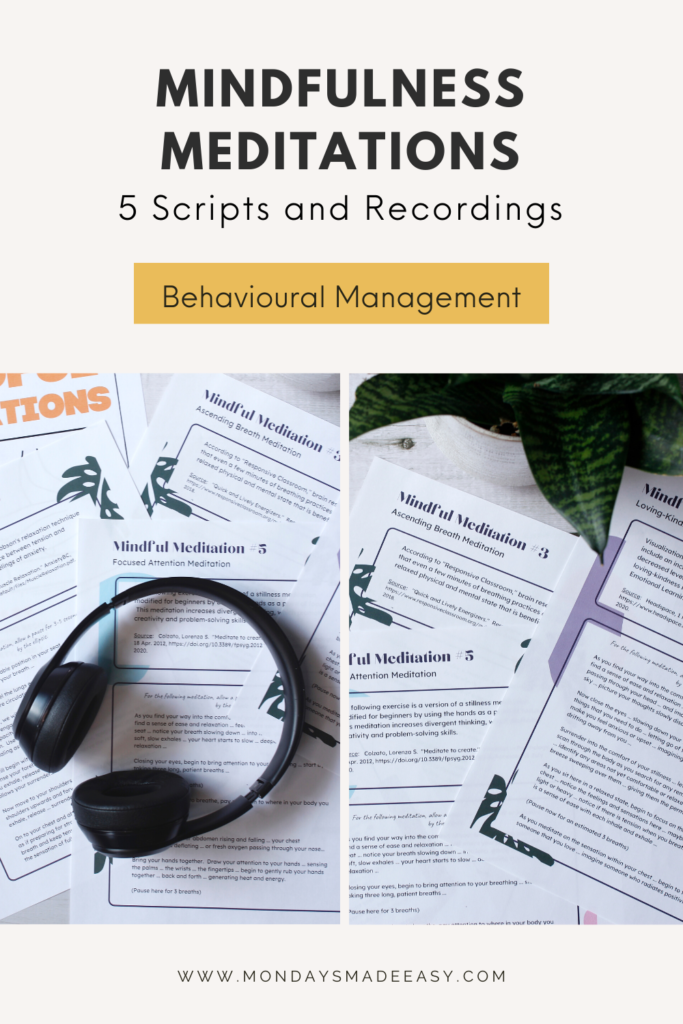
How Do You Meditate at School?
You don’t need to be a specialist to teach meditation in school. Meditation also does not require expensive equipment, specialized props, or trained professionals. There are several free tools for meditation in school. Here is a list of my favorite:
- YouTube: If you have steady internet access and a set of speakers, you can access guided meditation videos on YouTube. I like Goodful because they offer a variety of high-quality meditations that are the perfect length for my students.
- Streaming Platforms: If your internet access is not always reliable, another option is to pre-download a guided meditation from Spotify or Apple Music. Both platforms categorize meditation as a “genre” of music. This means you can find playlists and related “artists” easily.
- Apps: There are several free meditation apps that can help you customize your practice. I like Insight Timer. They havea massive free library and provide the option to adjust the length of meditation.
- Teachers Pay Teachers: You can find guided meditation scripts for students specifically made for classroom use on the TpT Marketplace.
- My Free Resource Library: Mondays Made Easy also offers a FREE Body-Scan Visualization Meditation Script for members of the Free Resource Library. This resource includes a mindful meditation script that you can read to your students. It also includes an audio recording of a guided reading. You can also access this resource by downloading it for free from Mondays Made Easy’s TpT Store.

Download Mondays Made Easy’s FREE Body-Scan Visualization Meditation resource!
Important Considerations for Student Safety and Well-Being
Like any lesson, teaching meditation in school requires preparation. Similar to a movie or magazine article, be sure to pre-screen the meditation recordings you use in class. Pre-screening meditations can help you identify whether or not these recordings are intended for meditation in schools.
Additionally, you’ll want to make sure that there are no advertisements, background noise, or other distractions. This might disrupt the experience for your students.
Most importantly, pre-screening your meditations is an important factor for trauma-informed teaching: Make sure that it does not explore painful memories or bodily experiences that would not be suitable for your students. It can be helpful for students with trauma to explore these uncomfortable sensations. However, this would best be done in a safe environment with a trained professional.
Your students might ask to turn the lights off during meditation. This is not the safest option for your students. I try to stick to natural light during my meditations. Refrain from complete darkness in order to keep your students’ safety in mind.
Lastly, you might enjoy the idea of practicing meditation with your students too. If so, be sure to have another adult in the room to supervise your students. If you have your eyes closed or your attention turned inward, you can risk the safety of your students.
I hope this blog post helped you understand the benefits of meditation in schools. It’s important to note that the research presented in this blog post applies to us as teachers as well! Meditation can certainly help support not just students, but the teaching profession as well.


